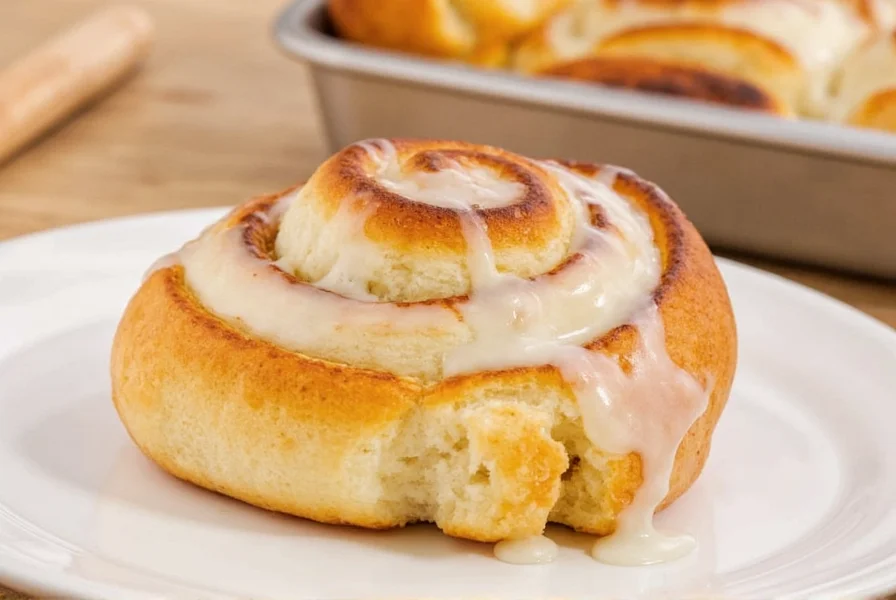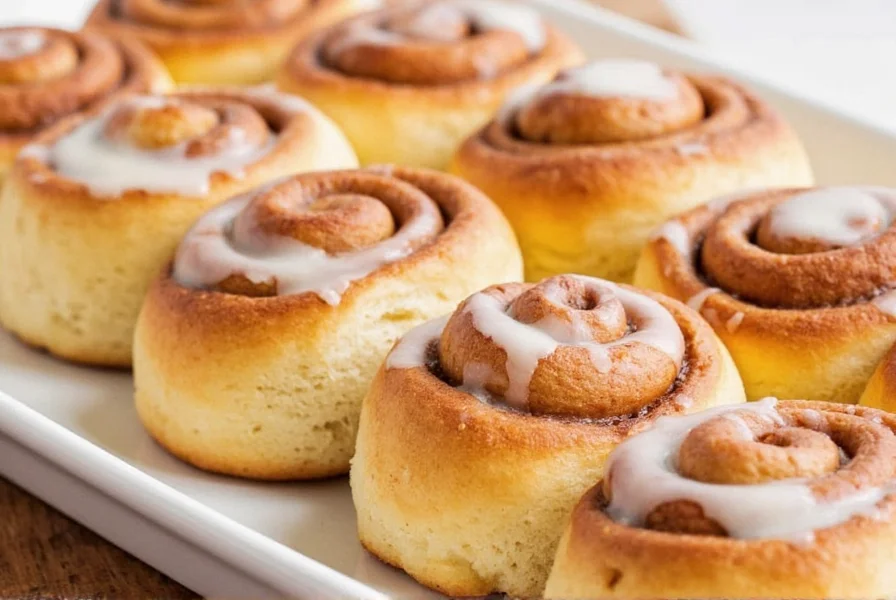The secret to perfectly soft cinnamon rolls lies in the dough hydration, proper yeast activation, and gentle handling. Our tested recipe uses a 65% hydration ratio, instant yeast, and a milk-based liquid component to create rolls that stay tender for days. Key techniques include proper kneading to develop gluten without overworking, optimal proofing temperature (75-80°F), and baking just until golden - not overdone.
Nothing compares to the aroma of freshly baked cinnamon rolls filling your kitchen on a weekend morning. Achieving that perfect soft, pillowy texture requires understanding the science behind yeast doughs and implementing precise techniques. This comprehensive guide delivers a foolproof soft cinnamon roll recipe that produces bakery-quality results in your home kitchen.
Why This Soft Cinnamon Roll Recipe Works
Most home bakers struggle with dense or dry cinnamon rolls because they miss critical elements in the dough formulation. Our recipe addresses three fundamental requirements for softness:
| Texture Factor | Scientific Principle | Recipe Implementation |
|---|---|---|
| Hydration Level | 65-70% hydration creates optimal gluten development | 1 cup warm milk + 2 eggs = perfect moisture balance |
| Fat Content | Fat tenderizes gluten strands | ⅓ cup butter + 2 egg yolks for rich, soft crumb |
| Yeast Management | Proper fermentation develops flavor without overproofing | Instant yeast + controlled 75°F proofing environment |
Essential Ingredients for Soft Cinnamon Rolls
The quality of your ingredients directly impacts the final texture. Here's what you need for the perfect soft cinnamon roll dough:
- All-purpose flour (3½ cups) - Bread flour creates too much chew; AP flour gives ideal tenderness
- Instant yeast (2¼ tsp) - More reliable than active dry for consistent rise
- Whole milk (1 cup, warm) - Creates softer crumb than water-based liquids
- Unsalted butter (⅓ cup, melted) - Adds richness and tenderizes gluten
- Eggs (2 large) - Provides structure while maintaining softness
- Granulated sugar (⅓ cup + ¾ cup for filling) - Feeds yeast and enhances browning

Step-by-Step Soft Cinnamon Roll Instructions
Dough Preparation (20 minutes)
- Warm milk to 110°F (not exceeding 115°F) and mix with melted butter, sugar, and yeast
- Allow mixture to sit for 5-7 minutes until foamy (critical yeast activation step)
- In stand mixer with dough hook, combine flour and salt
- Slowly add liquid mixture while mixing on low speed
- Add eggs one at a time, mixing until just incorporated
- Knead for 8-10 minutes until smooth and passes windowpane test
Proofing and Shaping (2 hours)
- Place dough in greased bowl, cover with damp cloth
- Proof at 75-80°F until doubled (60-90 minutes)
- Roll dough into 16x12 inch rectangle on floured surface
- Spread softened butter evenly over dough
- Mix cinnamon and sugar (¾ cup), sprinkle evenly over butter
- Roll tightly from long side, pinch seam to seal
- Cut into 12 equal pieces using dental floss technique
Professional Baking Tips for Maximum Softness
Follow these expert techniques to ensure your homemade soft cinnamon roll recipe delivers consistently tender results:
- Temperature control: Bake at exactly 350°F - higher temperatures cause rapid moisture loss
- Don't overbake: Remove when internal temperature reaches 190°F (about 22-25 minutes)
- Cool properly: Let rolls rest in pan for 10 minutes before icing to set structure
- Storage secret: Place cooled rolls in airtight container with slice of bread to maintain moisture
Common Mistakes That Ruin Cinnamon Roll Texture
Avoid these pitfalls when making your soft cinnamon roll recipe:
- Using expired yeast - Test yeast in warm liquid before starting (should foam within 5 minutes)
- Over-flouring the surface - Adds excess dryness; use minimal flour when rolling
- Rushing the proofing - Under-proofed dough won't develop proper air pockets
- Over-kneading - Creates tough gluten structure; stop when dough passes windowpane test
Delicious Variations to Try
Once you've mastered the basic soft cinnamon roll recipe, experiment with these popular variations:
- Cheesecake swirl: Add 4 oz softened cream cheese to filling mixture
- Bacon bourbon: Incorporate ½ cup crumbled bacon and 1 tbsp bourbon into glaze
- Apple cinnamon: Layer 1 cup finely diced apples between dough and filling
- Overnight method: Refrigerate shaped rolls, bake cold from fridge for convenient morning baking
Frequently Asked Questions
How do you keep cinnamon rolls soft after baking?
Store cooled cinnamon rolls in an airtight container with a slice of bread. The bread releases moisture slowly, keeping rolls soft for 3-4 days. For longer storage, freeze rolls individually wrapped, then thaw at room temperature. Never refrigerate cinnamon rolls as cold temperatures accelerate staling.
Why are my cinnamon rolls tough instead of soft?
Tough cinnamon rolls typically result from too much flour, over-kneading, or over-baking. Measure flour properly using the spoon-and-level method (never scoop directly with measuring cup). Knead only until the dough passes the windowpane test - when stretched thin, it should transmit light without tearing. Finally, remove rolls from oven at exactly 190°F internal temperature to prevent moisture loss.
Can I make soft cinnamon rolls without a stand mixer?
Absolutely. While a stand mixer makes kneading easier, you can create perfectly soft cinnamon rolls by hand. Mix ingredients in a large bowl, then turn dough onto lightly floured surface. Knead using the heel of your hand, folding and pushing for 10-12 minutes until smooth and elastic. The windowpane test remains your best indicator of proper gluten development. Hand-kneaded dough often produces excellent results with careful attention to texture.
What's the best way to reheat soft cinnamon rolls?
For optimal softness, reheat individual rolls in the microwave for 10-15 seconds covered with a damp paper towel. Alternatively, place rolls on a baking sheet and warm in a 300°F oven for 5-7 minutes. Never reheat at high temperatures which dry out the delicate crumb. If rolls have icing, add it after reheating for best texture.
How can I make my cinnamon rolls rise faster without compromising softness?
Create a proofing environment at 85°F by placing dough in oven with light on (no heat) and a pan of hot water below. This accelerates yeast activity while maintaining ideal moisture levels. Never exceed 90°F as higher temperatures kill yeast and create uneven texture. For best results with faster proofing, reduce yeast by 25% to prevent over-fermentation while still achieving proper rise.











 浙公网安备
33010002000092号
浙公网安备
33010002000092号 浙B2-20120091-4
浙B2-20120091-4